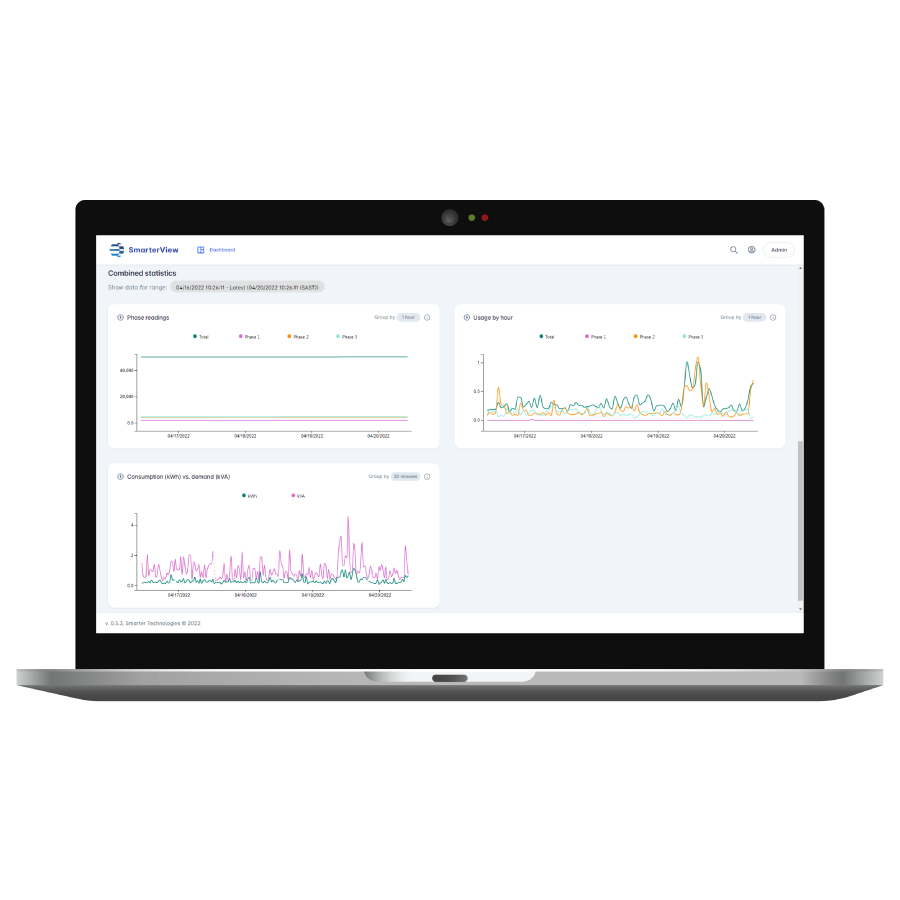FMs Must Embrace IoT to Make Efficiency Savings
Facilities managers that don’t embrace IoT will be left behind in the race to optimise services and make efficiency savings, warns Shields Energy. Over 30...
Read Full Article
Data centres already make up three per cent of global electricity consumption, and with the ever-expanding adoption of technology, consumption will only increase further.
Matthew Margetts from Smarter Technologies explains why data centres consume so much electricity and how the world should look to manage this issue.
Matthew is the Director of Sales and Marketing at Smarter Technologies. His background includes working for blue-chip companies such as AppNexus, AOL/ Verizon, and Microsoft in the UK, Far East and Australia.
The total installed base of Internet of Things (IoT) connected devices worldwide is projected to amount to 30.9 billion units by 2025. Data centres already use massive amounts of energy, and with more and more devices coming online, they’ll need to find ways to scale capacity and consumption.
Data centres are estimated to be responsible for as much as three per cent of global electricity consumption today, projected to increase to four per cent by 2030. The average hyperscale facility consumes 20-50MW annually, which is theoretically enough electricity to power up to 37,000 homes.
Data centres will almost certainly experience increased regulations in 2023 as the world continues to grapple with mounting pressures to meet consumer demand for energy and water against the backdrop of ongoing climate change. Data centres are outsized consumers of these resources, forcing governments at all levels to take a harder look at data centre regulation. In response, the industry understands that pursuing energy and water efficiency and focusing on overall environmental and community impact are crucial to its future success and survival.
For example, as part of its goal to become carbon negative by 2030, Microsoft is building three of the world’s most energy-efficient data centres in Denmark. Microsoft aims to complete the data centres by 2024. Innovations in these data centres include:
Another challenge which has hit the data centre industry hard is the increase in energy prices around the world—an increase of 600 per cent since January 2021 in the UK market. And prices could still get higher. The UK government’s Energy Bill Relief Scheme for businesses will help, but it won’t solve the problem altogether.
Data centres are looking at ways of becoming more sustainable in terms of energy efficiency and carbon emissions. The good news is that new technology is well-placed to make a difference. While there is a lot of talk about carbon neutrality and getting to net zero in the data centre sector, the first step is looking at energy efficiency—from procuring energy-efficient equipment, sourcing renewable energy, having the most energy-efficient data centre design and implementing a smart building energy monitoring system.
Reducing demand is also possible through server consolidation, storage and network consolidation, hybrid cloud, telecommunications, and RAN optimisation. Every year technology developments drive further efficiency in the data centre space to drive efficiency. It’s amazing to think that many data centres didn’t even contain containment just a few years ago.
While the energy impact of data centres is undeniable, what can’t be ignored is the energy efficiency trends that have developed in parallel. So, although the rise in IoT technology is increasing data centre demand, it’s also providing better energy management.
Here’s how:
Data centre operations require a safe, efficient, dependable and sustainable power supply. Fortunately, the same smart technology that is necessitating the growth of data centres is also helping to make them more energy efficient and future-fit.
Picture: a photograph showing a computer screen with energy monitoring graphs. Image Credit: Smarter Technologies
Article written by Matthew Margetts | Published 08 December 2022
Facilities managers that don’t embrace IoT will be left behind in the race to optimise services and make efficiency savings, warns Shields Energy. Over 30...
Read Full ArticleThe Tech Prosperity Deal between the UK and the US could present a huge growth opportunity for the facilities management sector. In this Opinion piece, Richard Sykes,...
Read Full ArticleAfter a 17-year partnership, Colt Data Centre Services has awarded Dalkia UK a new three-and-a-half-year FM contract. Dalkia UK will continue to provide critical...
Read Full ArticleEmcor UK has added data centre operations to its facilities management services capabilities. A new data centre team, led by Steve Clifford, Director of Data Centres,...
Read Full ArticleA new apprenticeship scheme to help develop skilled professionals for the data centre industry has launched. The collaboration between real estate company CBRE and...
Read Full ArticlePlanning has been submitted for two new data centres in the south-east of England. A 74-acre site close to Heathrow Airport has been earmarked to house one of the most...
Read Full ArticleThe government believes that fast tracking planning approvals will help to expand the UK’s domestic AI infrastructure. Proposed “AI Growth...
Read Full ArticleCBRE will provide hard and soft FM services across Kao Data's UK data centre portfolio. Kao Data has facilities east and west of London, and is behind...
Read Full ArticleGoogle has signed the world’s first corporate agreement to purchase nuclear energy from multiple small modular reactors to generate power for its data...
Read Full ArticleUK data centres are now classed as critical national infrastructure, the same status associated with energy supply, water supply, transportation, health and...
Read Full Article